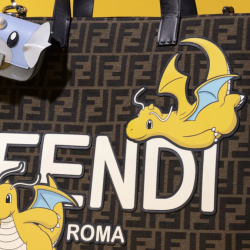In this interview MediaCat Magazine’s Editor Mike Piggott speaks to Paddy Gilmore, the founder of Studio Gilmore, an organisation which helps brands make more money by understanding how and when to use humour.
Hi Paddy, thanks for talking to us. Last month (March) at the magazine our theme was humour. I thought it worth speaking about the work you do, because it feels quite unique. What made you settle on funny as the backbone of your business?
Three reasons: first, humour in advertising has been shown to making people more likely to buy. So that’s good news for brands. Second, it’s people’s preferred brand messaging type (over say, reassuring or motivational messages). That’s good news for consumers. And finally, we know far more about the science and mechanisms of humour than we’ve ever known in the past. So that’s good news in terms of effectiveness.
Also, humour is fascinating. There’s no other subject that causes both immense pleasure and, if done badly, immeasurable distress. That’s so intriguing. I studied the subject at master’s level and worked in advertising for many years on funny campaigns. So it made sense to turn it into a consultancy for my clients such as Harley-Davidson, WPP and Epson.
In your career in the past you’ve worked for VISA and Bloomberg. Humour doesn’t immediately spring to mind with those companies. Looking back, were you historically trying to inject humour into your work in those types of organisations?
Yes, and sometimes getting into trouble along the way. For example, at Bloomberg we had an internal careers fair. To advertise it we had large stickers printed with the words ‘IS YOUR CAREER GOING THIS WAY?’, and an arrow pointing down. We then stuck these under the lids of the staff toilets. The robots in HR quickly found out about it and slapped our wrists. That was the end of that. Looking back, Bloomberg and VISA were a bit too corporate for the kind of creative solutions I was bringing, but that’s OK. Other companies (Three, Getty Images, Médecins Sans Frontières) were a lot more open. As time went on, I wasn’t just interested in humour from a creative angle, but a strategic angle too — hence my consultancy.
When we spoke the other week you were telling me about the science behind humour. Humour studies is a rapidly growing field. Can you tell us about it?
Sure. For many years humour was barely studied. There are two reasons why: firstly, it was seen as fundamentally unserious. And secondly, academics realised it was actually a very complex area. This was quite off-putting. It all changed when Sigmund Freud, the father of psychoanalysis, published a book about humour. This gave a validity to the subject as an area of scientific interest, and that’s only grown. Since the 1980s it’s flourished, with massive strides forward in our scientific knowledge. To give you an idea of this progress we know of only two academic articles published between 1900 and 1909 mentioning ‘humour’ or ‘laughter’. A hundred years on, between 2000 and 2009, there were 440 articles. That’s an increase of 21,900%.
For brands, this is great news. It means our insights into how humour works (and the kind of audiences it works with) are only growing.
You also talked about giving clients ‘a humour audit’. I don’t know if that sounds hilarious or frightening. How are those audits typically received? Do you find clients are quite open to understanding what works when it comes to humour, for them as brands?
They’re very open to it. Even though we all know what humour is, to really understand it a certain knowledge of psychology is needed. So I take my clients on a trip, looking at emotional, cognitive and social forms of humour. I help them to understand the breadth and depth of humour mechanisms and how they work. I’m not the ‘humour police’. On the contrary, it’s about finding the right kind of solutions for them.
My clients are typically surprised by what they find out. But when they do explore the humour map, as it were, they can start to understand why global brands like Volkswagen, IKEA and McDonald’s use humour widely and, indeed, very effectively.
Do you get any common sorts of objections to the work you do? For example, is humour seen as frivolous by some clients? Perhaps in the same way the Academy judges films, often awarding dramas Oscars, whereas comedies rarely get a look-in
Some potential clients see it as unserious. But there’s a cognitive dissonance at work in many brands’ thinking. For example, when I launched I was talking to a senior marketer at Audible. He said he’d never touch humour as it’s ‘toxic’. But in the same conversation he said that the ad campaigns he had always loved and remembered, had been those that made him laugh. So his head said no but his heart said yes.
The simple truth is that humour is remarkably effective, with very serious subjects. Insurance, for example, is a serious subject — it certainly is when we’ve had someone crash into our car. But this is why American insurance companies, such as GEICO and Progressive, use humour so well.
To sell a serious product they know they have to sweeten the pill. And that’s why they choose a humour-led approach.
Do you have any sorts of challenges around the types of humour around the world? Or are there certain universal truths which you know would work globally for some businesses?
There are various geographical challenges and I do often have to identify and find solutions to them. But on the whole there are many universal truths as to how humour works — and for whom — in every society. The notion that humour doesn’t travel is very widespread but, in my view, often exaggerated. A lot depends on the type, or types, of humour being used.
What do you think about Cannes Lions adding a humour category? Do you think this is a good thing?
On the whole, I think it’s a good thing. If it promotes the idea of humour as more discussed and acceptable, that’s great. However, I prefer to see advertising as going above and beyond Cannes which, to me, is very self-regarding. The question is not ‘Should this ad win an award for humour?’, but rather it should be, ‘Is this ad creatively and commercially effective?’
In a recent interview I asked the CMO of Boots, Pete Markey, to tell me what recent work he’d seen out there that had impressed him in terms of humour. I’d like to ask you the same thing. Anything caught your eye?
I’m a big fan of GEICO’s Skippable Elevator ad. But a lot of other ads have crossed my radar: South Africa’s King Price have some lovely ads, including this one from the pandemic. New Zealand’s Macpac have also done some great work: this one, from last year, is superb.
And finally, fancy telling us a joke?
Did you hear about the cargo ship carrying yo-yos? It sank 44 times.
Thanks, Paddy, for talking to us.
Thank you, I really enjoyed it.
Featured image: Mark Basarab / Unsplash































In this interview MediaCat Magazine’s Editor Mike Piggott speaks to Paddy Gilmore, the founder of Studio Gilmore, an organisation which helps brands make more money by understanding how and when to use humour.
Hi Paddy, thanks for talking to us. Last month (March) at the magazine our theme was humour. I thought it worth speaking about the work you do, because it feels quite unique. What made you settle on funny as the backbone of your business?
Three reasons: first, humour in advertising has been shown to making people more likely to buy. So that’s good news for brands. Second, it’s people’s preferred brand messaging type (over say, reassuring or motivational messages). That’s good news for consumers. And finally, we know far more about the science and mechanisms of humour than we’ve ever known in the past. So that’s good news in terms of effectiveness.
Also, humour is fascinating. There’s no other subject that causes both immense pleasure and, if done badly, immeasurable distress. That’s so intriguing. I studied the subject at master’s level and worked in advertising for many years on funny campaigns. So it made sense to turn it into a consultancy for my clients such as Harley-Davidson, WPP and Epson.
In your career in the past you’ve worked for VISA and Bloomberg. Humour doesn’t immediately spring to mind with those companies. Looking back, were you historically trying to inject humour into your work in those types of organisations?
Yes, and sometimes getting into trouble along the way. For example, at Bloomberg we had an internal careers fair. To advertise it we had large stickers printed with the words ‘IS YOUR CAREER GOING THIS WAY?’, and an arrow pointing down. We then stuck these under the lids of the staff toilets. The robots in HR quickly found out about it and slapped our wrists. That was the end of that. Looking back, Bloomberg and VISA were a bit too corporate for the kind of creative solutions I was bringing, but that’s OK. Other companies (Three, Getty Images, Médecins Sans Frontières) were a lot more open. As time went on, I wasn’t just interested in humour from a creative angle, but a strategic angle too — hence my consultancy.
When we spoke the other week you were telling me about the science behind humour. Humour studies is a rapidly growing field. Can you tell us about it?
Sure. For many years humour was barely studied. There are two reasons why: firstly, it was seen as fundamentally unserious. And secondly, academics realised it was actually a very complex area. This was quite off-putting. It all changed when Sigmund Freud, the father of psychoanalysis, published a book about humour. This gave a validity to the subject as an area of scientific interest, and that’s only grown. Since the 1980s it’s flourished, with massive strides forward in our scientific knowledge. To give you an idea of this progress we know of only two academic articles published between 1900 and 1909 mentioning ‘humour’ or ‘laughter’. A hundred years on, between 2000 and 2009, there were 440 articles. That’s an increase of 21,900%.
For brands, this is great news. It means our insights into how humour works (and the kind of audiences it works with) are only growing.
You also talked about giving clients ‘a humour audit’. I don’t know if that sounds hilarious or frightening. How are those audits typically received? Do you find clients are quite open to understanding what works when it comes to humour, for them as brands?
They’re very open to it. Even though we all know what humour is, to really understand it a certain knowledge of psychology is needed. So I take my clients on a trip, looking at emotional, cognitive and social forms of humour. I help them to understand the breadth and depth of humour mechanisms and how they work. I’m not the ‘humour police’. On the contrary, it’s about finding the right kind of solutions for them.
My clients are typically surprised by what they find out. But when they do explore the humour map, as it were, they can start to understand why global brands like Volkswagen, IKEA and McDonald’s use humour widely and, indeed, very effectively.
Do you get any common sorts of objections to the work you do? For example, is humour seen as frivolous by some clients? Perhaps in the same way the Academy judges films, often awarding dramas Oscars, whereas comedies rarely get a look-in
Some potential clients see it as unserious. But there’s a cognitive dissonance at work in many brands’ thinking. For example, when I launched I was talking to a senior marketer at Audible. He said he’d never touch humour as it’s ‘toxic’. But in the same conversation he said that the ad campaigns he had always loved and remembered, had been those that made him laugh. So his head said no but his heart said yes.
The simple truth is that humour is remarkably effective, with very serious subjects. Insurance, for example, is a serious subject — it certainly is when we’ve had someone crash into our car. But this is why American insurance companies, such as GEICO and Progressive, use humour so well.
To sell a serious product they know they have to sweeten the pill. And that’s why they choose a humour-led approach.
Do you have any sorts of challenges around the types of humour around the world? Or are there certain universal truths which you know would work globally for some businesses?
There are various geographical challenges and I do often have to identify and find solutions to them. But on the whole there are many universal truths as to how humour works — and for whom — in every society. The notion that humour doesn’t travel is very widespread but, in my view, often exaggerated. A lot depends on the type, or types, of humour being used.
What do you think about Cannes Lions adding a humour category? Do you think this is a good thing?
On the whole, I think it’s a good thing. If it promotes the idea of humour as more discussed and acceptable, that’s great. However, I prefer to see advertising as going above and beyond Cannes which, to me, is very self-regarding. The question is not ‘Should this ad win an award for humour?’, but rather it should be, ‘Is this ad creatively and commercially effective?’
In a recent interview I asked the CMO of Boots, Pete Markey, to tell me what recent work he’d seen out there that had impressed him in terms of humour. I’d like to ask you the same thing. Anything caught your eye?
I’m a big fan of GEICO’s Skippable Elevator ad. But a lot of other ads have crossed my radar: South Africa’s King Price have some lovely ads, including this one from the pandemic. New Zealand’s Macpac have also done some great work: this one, from last year, is superb.
And finally, fancy telling us a joke?
Did you hear about the cargo ship carrying yo-yos? It sank 44 times.
Thanks, Paddy, for talking to us.
Thank you, I really enjoyed it.
Featured image: Mark Basarab / Unsplash